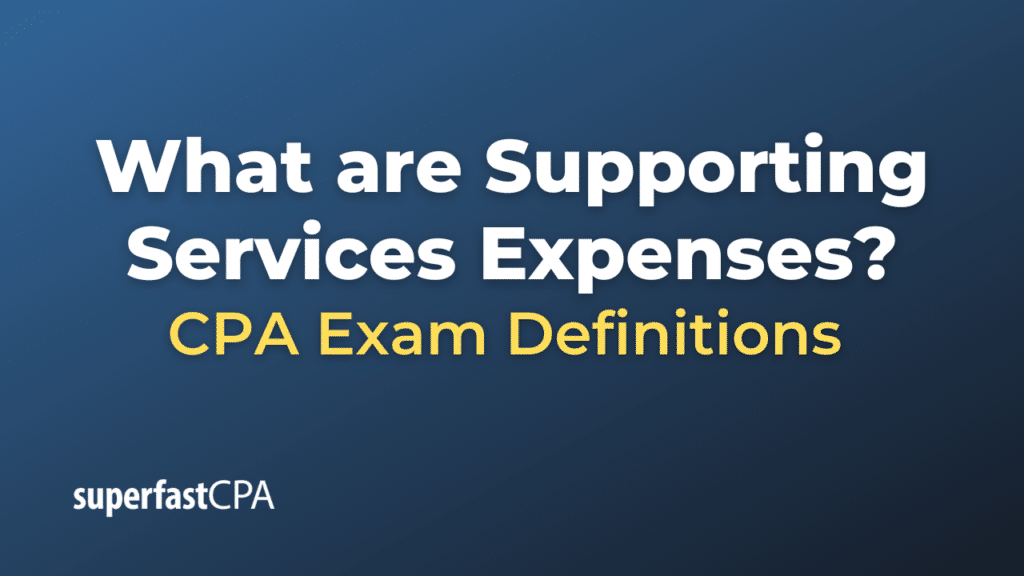Supporting Services Expenses
Supporting services expenses are costs related to the activities that must occur for an organization to provide its primary program services but are not directly connected to the delivery of those program services. These expenses are typically associated with nonprofit organizations, where the primary objective is not profit generation, but rather the execution of a specific mission or program.
In the nonprofit context, the expenses are typically broken down into three main categories:
- Program Services Expenses: These are the costs directly related to executing the core mission of the organization. For example, in a nonprofit that focuses on educational outreach, expenses related to developing and delivering educational materials would be considered program services expenses.
- Supporting Services Expenses: These are the costs associated with activities that support the organization as a whole but aren’t directly tied to the primary mission. They can be further divided into:
- Management and General Expenses : These costs include overall governance, business management, general record keeping, budgeting, financing, etc. This would include salaries of top management, office rent, utilities, and other administrative costs that aren’t tied to a specific program but are essential for the organization’s overall operation.
- Fundraising Expenses : As many nonprofits rely heavily on donations and grants, they will have costs related to fundraising activities. This can include costs associated with organizing fundraising events, marketing campaigns targeted at donors, or hiring fundraising consultants.
- Membership Development Expenses: Some nonprofits, especially member-based associations, might also incur costs related to attracting, retaining, or serving members. These expenses might include member recruitment campaigns, member benefits programs, or member communication platforms.
Example of Supporting Services Expenses
Let’s use a fictional example of a nonprofit organization called “City Homeless Care” (CHC) that aims to provide shelter, food, and support to the homeless in a metropolitan area.
City Homeless Care’s Annual Expense Report
Program Services Expenses: $750,000
- Direct services to the homeless:
- Food and meals: $250,000
- Shelter facilities maintenance and utilities: $300,000
- Health check-ups and basic medical care: $150,000
- Job training and life skills programs: $50,000
Supporting Services Expenses: $200,000
- Management and General Expenses: $120,000
- Salaries (CEO, CFO, administrative staff): $80,000
- Office rent: $20,000
- Office supplies, utilities, and miscellaneous: $10,000
- Legal and accounting services: $10,000
- Fundraising Expenses: $80,000
- Annual fundraising gala: $40,000
- Marketing and promotional materials (brochures, ads, social media campaigns): $20,000
- Donor management software and outreach: $15,000
- Fundraising consulting fees: $5,000
Total Expenses for the Year: $950,000
By examining this breakdown, stakeholders can get a clear picture of how CHC uses its funds:
- The majority (79%) of expenses directly support the homeless, which aligns with the organization’s mission.
- About 13% of the expenses go towards the essential administration and management activities to keep the organization running smoothly.
- 8% of expenses are directed towards fundraising, a crucial aspect to ensure the organization can sustain its operations and potentially expand its reach.
This clarity helps build trust among donors and supporters, assuring them that their contributions are primarily directed towards the mission of supporting the homeless. It also offers an opportunity for the organization to reflect on its costs and find areas for potential efficiencies.













